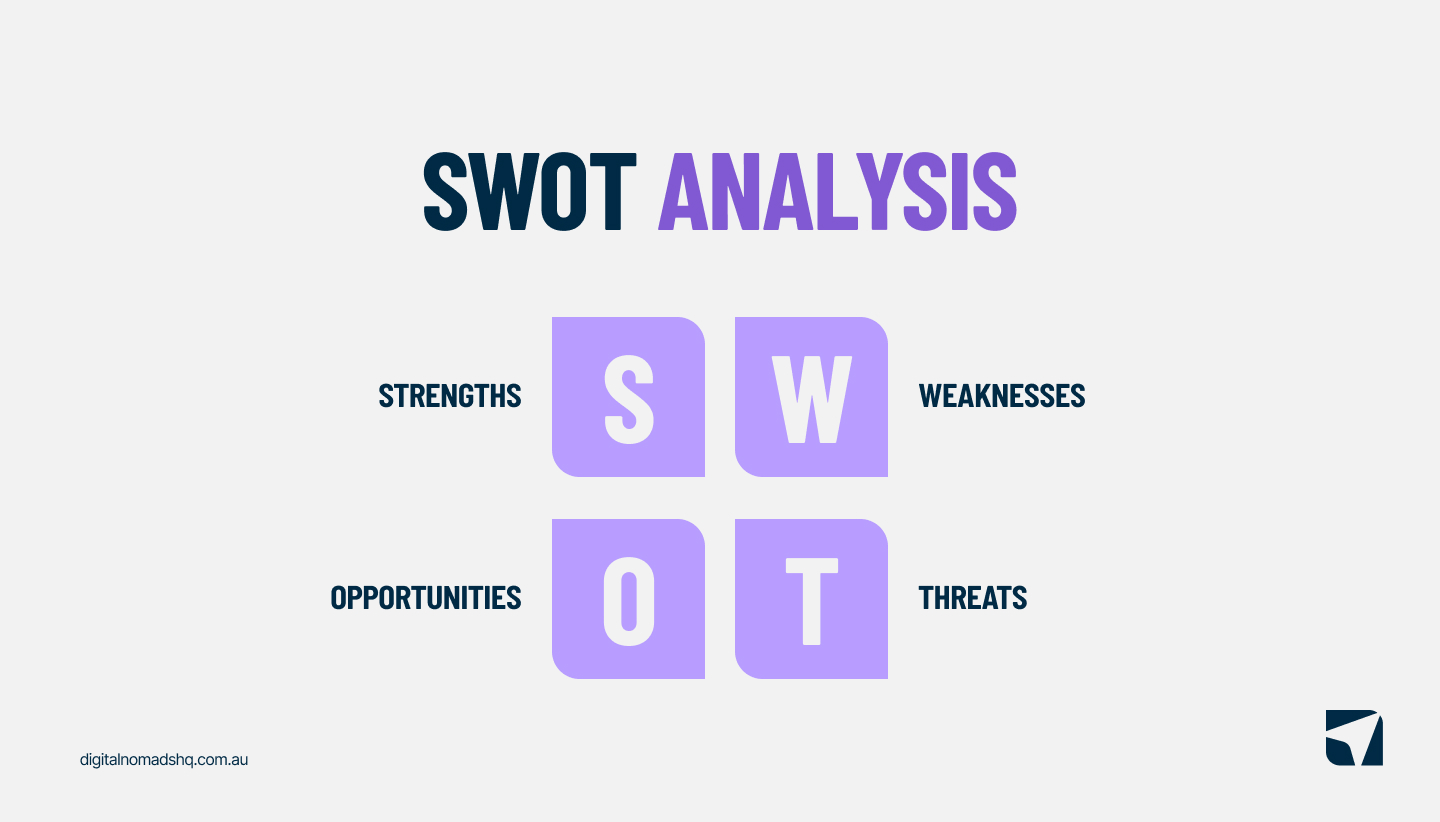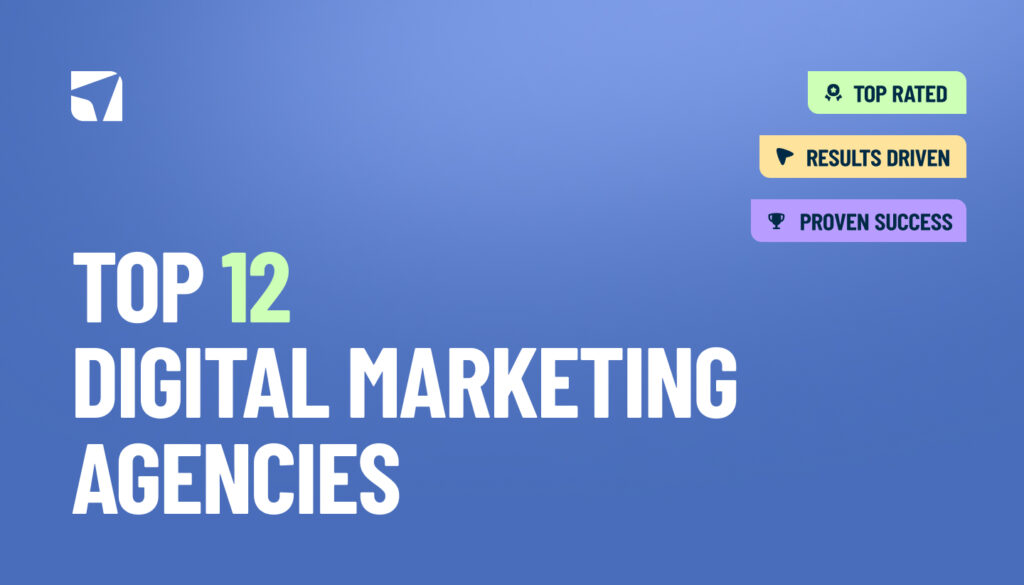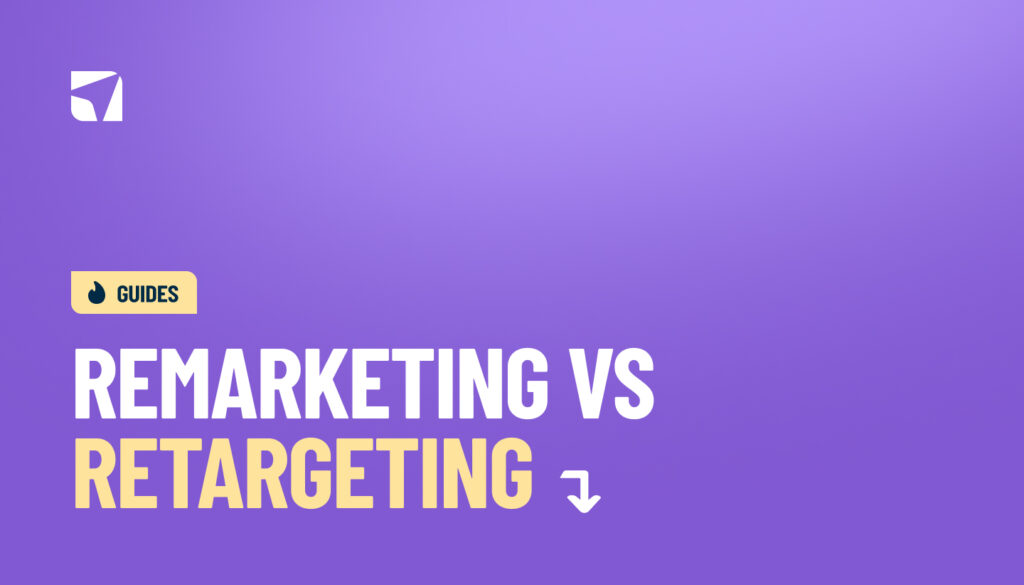So what exactly is a brand strategy? It’s a structured plan that outlines your brand’s goals and shows you how to achieve them over time. When you get it right, it helps teams focus their messaging and streamline workflows. A well-defined brand personality also strengthens awareness and customer loyalty while setting your business apart from competitors.
Think about it this way: every social post, every product launch, and every customer interaction becomes an opportunity to reinforce what matters most to your business. But here’s the catch. Without understanding where your brand currently stands, building a future-proof strategy becomes nearly impossible.
This step-by-step guide will show you how to create a solid brand strategy framework. From conducting a thorough brand audit to defining your purpose, understanding your target audience, and executing a strategy that grows with your business. Ready to build a brand that truly connects and endures?
Start with a Brand Audit
You can’t build an effective brand strategy without knowing where you stand today. A brand audit provides a critical foundation by examining your brand’s current market position.
This systematic evaluation identifies strengths you can build on and weaknesses that need attention, providing a clear starting point for brand development.
Review current brand assets
Your brand audit begins with cataloguing what you actually have. Start by gathering all your brand materials: logos, typography, colour palettes, imagery, marketing collateral, and digital content. This process shows you what exists, where it’s stored, and whether these assets still align with your current branding direction.
Focus on selecting files your entire team needs access to, those used most regularly, and the most current versions of everything. Set up a clear system for organising this process moving forward, including revision dates and lifecycle information for each asset.
This audit stage often reveals inconsistencies across your brand touchpoints. When you examine external marketing materials, such as product packaging, promotional items, brochures, and digital presence, you’ll notice where assets don’t consistently reflect your brand identity.
Analyse customer perception
How your target audience actually perceives your brand matters more than how you think they see it. This perception directly impacts brand equity. The value premium your brand commands affects your sales and profits.
Several methods help measure brand perception:
- Brand surveys and feedback: Create simple questionnaires gathering customer opinions about your brand, their experiences, likes, dislikes, and likelihood to recommend you to others.
- Social media outreach and monitoring: Track mentions and reactions across platforms to analyse performance and respond to feedback quickly.
- Focus groups and forums: Gather small groups to hear directly from people who use your products or services.
- Website analytics: Monitor traffic, bounce rates, and engagement metrics to understand how customers interact with your online presence.
Important note: Your perception audit should include both existing customers and non-customers. While current clients have already connected with your brand, those who chose not to buy often provide the most valuable insights about what might be pushing people away.

Conduct a SWOT analysis
A SWOT analysis examines internal and external factors impacting your brand. “SWOT” stands for Strengths, Weaknesses, Opportunities, and Threats, giving you a complete view of your brand’s position.
The first half (strengths and weaknesses) covers internal factors you control. These include unique assets, knowledge, skills, reputation, or areas needing improvement.
The second half (opportunities and threats) examines external factors like market trends, competitor actions, and potential business challenges.
Actionable Steps for SWOT Analysis:
- Involve a diverse team with different perspectives: include people from sales, marketing, product development, and leadership.
- Look inward first to identify your brand’s strengths and weaknesses objectively.
- Focus outward to list opportunities and threats in the marketplace.
- Review opportunities through the lens of your identified strengths.
- Decide whether to address or avoid threats based on your current resources.
Complete this analysis regularly, at least every 6-12 months, to stay relevant in your changing market. A thorough SWOT analysis creates the foundation for your next brand strategy steps.
Discover and Define Your Brand Purpose
Understanding where you stand is just the beginning. Every successful brand strategy framework needs a compelling reason for existence that goes beyond profit margins. Your brand purpose becomes the foundation guiding all strategic decisions and connects your business to something meaningful.
Ask why your brand exists
Brand purpose represents your company’s “why” – the fundamental reason for being that extends beyond making money.
Simon Sinek captured this perfectly in his 2009 TED talk: “People don’t buy what you do; they buy why you do it”.
This shifts focus from products and services to the underlying motivation driving your business.
To uncover your authentic brand purpose, start by reflecting on these key questions:
- What gap or need did your business originally aim to address?
- What would the world miss if your brand disappeared tomorrow?
- What impact do you aspire to have on customers and society?
- What underlying beliefs drive your business decisions?
Your answers should reveal motivations that go beyond simple transactions. Brand purpose radiates outward from your mission and beliefs, ultimately touching every aspect of your business, from company culture to strategic decisions.
Align purpose with customer needs
A brand purpose only works when it sits at the intersection of your company values and your audience’s priorities. Modern consumers expect brands to deliver on societal issues as well as products. They increasingly make purchasing decisions based on how well a brand’s purpose aligns with their personal values.
This alignment creates powerful connections, but authenticity remains essential: consumers can quickly spot disingenuous attempts at purpose-driven branding. Your brand purpose should reflect genuine motivations rather than being reverse-engineered solely for marketing advantage.
Steps to align purpose with customer needs:
- Gather input from key stakeholders, including employees and customers
- Understand the values that matter most to your target audience
- Identify where your authentic brand values and customer priorities overlap
- Ensure your purpose addresses real customer needs and concerns
This exercise helps identify what your brand does better than anyone else and how these strengths contribute to a greater good.
Distil your purpose into one phrase
Once you’ve identified your brand core and purpose, the challenge becomes articulating it clearly. A great purpose statement should be both aspirational and authentic. It should inspire your stakeholders while remaining connected to your existing work.
A well-crafted purpose statement communicates your message concisely so your target audience can quickly understand why your business exists. For maximum effectiveness, distil your purpose into a single, memorable sentence that encapsulates your brand’s heart and soul.
The refinement process:
- Document all potential expressions of your purpose
- Evaluate each option based on authenticity, relevance, and memorability
- Test your statement with key stakeholders to ensure it resonates
- Refine until you have a simple yet powerful expression of your “why”
This purpose statement becomes the cornerstone of your brand framework. It guides product development, marketing campaigns, customer service policies, and even hiring decisions. Expressing brand purpose in your job ads and recruitment marketing helps attract people who naturally fit your company culture.
*Note* The brand purpose you define through this process creates a solid foundation for all subsequent elements of your brand strategy framework.
Identify and Understand Your Core Audience
Your brand framework depends on knowing exactly who you’re trying to reach. Understanding your core audience isn’t just helpful – it’s essential for crafting messages that actually resonate, creating products that solve real problems, and building genuine connections with customers.
Segment your audience
Audience segmentation breaks down your broader market into smaller, more defined groups based on shared characteristics, such as age groups like Millennials, Gen Z, or Baby Boomers. This approach lets you tailor your marketing efforts and deliver messages that connect with specific audiences.
Effective segmentation approaches include:
- Demographic segmentation: Categorises audiences using measurable statistics like age, gender, income, education level, marital status, and occupation. This gives you a foundational understanding of who your customers are on paper.
- Psychographic segmentation: Digs deeper into values, beliefs, interests, lifestyle choices, and personality traits. This reveals the “why” behind customer decisions, what they care about and what drives them.
- Behavioural segmentation: Groups consumers based on how they interact with your brand, including purchasing habits, brand loyalty, usage rates, and responses to marketing initiatives.
- Geographic segmentation: Divides audiences by location, helping you customise marketing strategies for regional preferences and needs.
Segmentation elevates your marketing strategy by improving focus, ensuring a customer-first approach, uncovering new opportunities, and giving you a competitive edge in reaching the right people.
Build detailed buyer personas
Buyer personas turn segmented data into detailed profiles representing your ideal customers. These semi-fictional characters capture the characteristics, goals, challenges, and preferences of your target audience segments.
Research shows that marketers who use buyer personas enjoy higher conversions than those who don’t.
Creating these detailed representations helps you personalise marketing, improve targeting, drive better lead qualification, enhance customer experiences, and inform strategic decisions.
To create effective buyer personas:
- Conduct thorough research through competitor analysis, customer surveys, social media listening, and analysing existing customer data.
- Look for patterns and commonalities in your research, identifying shared traits, behaviours, and preferences among your target customers.
- Document key information in your persona template, including:
- Demographic details (age, gender, income, location)
- Defining traits and characteristics
- Goals and aspirations related to your products/services
- Pain points and frustrations your brand can address
- Preferred communication channels and content formats
- Buying behaviours and decision-making processes
The strongest buyer personas come from interviewing real customers. Specifically, those who have recently made buying decisions similar to what you’re trying to influence. Their experiences provide authentic insights into the decision-making journey.
Understand emotional drivers
Here’s something that might surprise you: emotions drive roughly 90% of our decisions, leaving only 10% to rational thought. This applies even in seemingly logical business contexts.
Emotional drivers are the underlying feelings and desires that influence people’s decisions and behaviours, going well beyond practical needs.
The main emotional drivers include:
- Belonging/Love: The need for connection with others or oneself
- Control/Security: The desire for stability and safety
- Diversity: Craving for variety and new experiences
- Recognition: The need for acknowledgment and being noticed
- Achievement: The drive to accomplish goals and complete tasks
- Challenge/Growth: Motivation for learning and self-improvement
- Excellence: Pursuit of quality and self-satisfaction
- Responsibility/Contribution: The need to positively impact others
Understanding these emotional motivations allows you to craft brand messaging that forms deeper connections. When companies successfully connect with customers’ emotions, the results can be dramatic, including increased market share, accelerated growth, and higher customer retention.
Integrating audience understanding into your brand strategy framework ensures your brand messaging resonates on both rational and emotional levels. This approach helps create brand experiences that truly matter to the people you serve, building stronger relationships that translate to business success.
Build a Clear Brand Strategy Framework
Now that you’ve defined your brand purpose and identified your core audience, it’s time to pull these elements together into a structured framework. A solid brand strategy framework becomes the foundation for all your marketing efforts and business decisions, ensuring consistency across every customer touchpoint.
Set brand principles and values
Brand values are the foundational beliefs your company stands for. They’re the ideals that guide your brand’s actions and define what matters most to your business beyond profit. These core principles serve as a compass for decision-making and behaviour throughout your entire organisation.
Strong brand values deliver real benefits:
- Attract employees whose personal values align with your brand
- Create genuine connections with customers beyond simple advertising
- Guide long-term decision-making and daily operations
- Set your brand apart in competitive markets
To discover your authentic brand values, ask yourself these key questions: “What principles will guide our behaviour?” and “What are we truly committed to?”
Starbucks, for example, centres their values around “Creating a culture of warmth and belonging” and “Acting with courage, challenging the status quo.”
The goal is to narrow your list to 3-5 mafin values that honestly reflect what’s important to your company.
Remember, these values must be woven throughout every part of your brand strategy, from how you communicate with staff to the strategic decisions you make.
Define brand messaging pillars
Messaging pillars are the three primary themes, benefits, or unique value propositions that separate your brand from competitors. These pillars create the foundation of your overall messaging strategy by identifying what’s most important and ensuring your communication reflects your brand core and values.
Your messaging pillars should highlight the main benefits customers get from choosing your brand. They create a compelling case for customers while giving your content creators a framework to stay aligned with your brand tone and mission.
When developing messaging pillars, focus on these key areas:
- Purpose – why your brand exists
- Perception – how customers view your brand
- Brand identity – your company culture and point of view
- Brand values – what matters beyond financial gain
- Brand experience – how customers interact with you
Once you’ve worked through these areas, distil them into concise, memorable statements that your entire team can consistently communicate across all channels.
Outline your brand architecture
Brand architecture defines how brands, sub-brands, product categories, and services within your organisation relate to each other. This strategic framework helps you manage your brand portfolio, guide future growth, and clearly communicate brand relationships to customers.
Well-implemented brand architecture delivers several advantages:
- Increased clarity in the marketplace
- Better cross-selling opportunities
- Stronger brand equity
- Improved company culture
- Less overall brand damage if issues arise
- More effective change management
Your brand architecture establishes how individual components relate to one another. This helps internal stakeholders understand how to segment messaging and differentiate brand identities without compromising your master brand’s unified vision.
Brand architecture isn’t set and forget. Business changes like mergers, acquisitions, or new product launches mean you should regularly monitor and review your current architecture. Adjust it when necessary to stay relevant in your changing market.
Craft Your Brand Story and Message Map
Your brand strategy framework needs more than solid foundations. It needs compelling communications, expressed in a consistent brand tone, that actually connect with people. Brand stories and strategic messaging transform those abstract concepts into conversations that matter to your audience.
Write a compelling brand story
A brand story isn’t just a timeline of your company’s milestones. It’s a narrative that communicates your mission, creates emotional connections, and builds genuine trust with customers. The reason stories work so well is simple: humans are naturally drawn to narratives because we want to understand how things came to be.
Strong brand stories share these essential characteristics:
- Authenticity – Show the real struggles and challenges your brand has faced
- Customer-centricity – Make your audience the hero, not your brand
- Problem-solution framework – Clearly explain what problems you solve
- Emotional resonance – Connect on a human level beyond transactions
- Simplicity – Keep the narrative focused on what matters most
The most effective brand stories follow a classic structure: status quo (how things were), conflict (the problem or challenge), and resolution (how your brand provides the solution). This creates the kind of tension and emotional investment that a simple company history can’t achieve.
Map key messages to audience needs
A message map acts as your strategic blueprint for all external communications. Unlike standard marketing materials, it organises your brand core, key messages and supporting details for different audience segments, ensuring everyone stays consistent across all channels.
A well-structured message map includes headlines, key points, and supporting details that explain the benefits of your offering for specific customer segments. It also contains examples, use cases, proof points, and customer testimonials that back up your claims.
Actionable Steps:
- Start with your buyer personas from the previous step
- Focus on their specific motivations and frustrations
- Craft headlines that directly address their pain points
- Emphasise benefits over features in your messaging
- Format your map with clear hierarchies using headings, bullets, and tables
Remember that your message map should evolve as your market, competitors, and products change. Assign someone (usually a product marketer) to keep it updated and relevant.
Ensure alignment with brand positioning
Your brand stories and message maps must work together with your brand positioning to create a cohesive identity. Positioning shows what makes your brand different and better than competitors, while messaging explains what you do to make that brand positioning real.
Maintain a consistent brand voice, brand tone and brand personality across all brand communications that reflect your brand promise and values. This consistency builds recognition, credibility, and trust with customers, ultimately creating customer loyalty. Inconsistent messaging does the opposite: it confuses customers and weakens your market position.
Your brand narrative should reinforce your unique selling proposition (USP), whatever makes you distinctly different from competitors. Whether it’s innovative technology, exceptional service, or superior quality, consistently highlight what sets you apart.
Test your messaging regularly with your audience to ensure your story resonates and delivers the right impression. As your brand grows and changes, revisit both your messaging and positioning to stay relevant in your market.
Execute and Evolve Your Brand Strategy
Getting your brand strategy framework from concept to reality requires focused execution and ongoing refinement. You’ve established your brand’s foundation, now it’s time to bring your strategy to life through visual elements and ongoing optimisation.
Design your visual identity system
A cohesive visual identity system creates instant recognition across all touchpoints. Your system needs consistent design elements that reflect your brand purpose and connect with your audience. Start by establishing these core components:
- Logo variations and usage parameters
- Brand colour palette with specific hex codes and CMYK values
- Typography hierarchy and font specifications
- Composition guidelines for layouts
- Imagery style that aligns with brand personality
Your visual guidelines and elements must work together seamlessly while clearly communicating your brand positioning.
Strategic design choices create a recognisable aesthetic that reinforces your brand’s unique attributes.
Create brand guidelines and templates
Brand guidelines serve as the central hub for all brand assets, both visual and non-visual. This documentation ensures anyone representing your brand maintains consistency. Your guidelines should include:
- Detailed instructions for proper logo usage
- Colour specifications with contextual applications
- Typography rules with specific size relationships
- Photography and imagery standards
- Brand voice and tone guidance
Develop reusable templates alongside your guidelines for common applications like presentations, social media, and marketing materials. These resources save time while maintaining brand integrity across departments.
Track performance and adapt over time
Brand strategy isn’t a set-and-forget exercise – it requires ongoing evaluation and refinement. Establish clear objectives and key performance indicators to measure effectiveness. Consider tracking:
- Brand awareness metrics
- Customer perception measurements
- Engagement rates across channels
- Conversion metrics tied to brand initiatives
You need both quantitative data and qualitative feedback through customer satisfaction ratings and social listening. Analyse results regularly, identifying what resonates with your audience and what needs adjustment.
Monitor market shifts and competitor positioning. Your willingness to evolve based on performance insights ensures your brand strategy framework remains relevant in a changing landscape.
Bringing it All Together
Building a strong brand goes far beyond a logo or tagline. It’s about creating a strategy that connects, guides decisions, and evolves with your business.
When your brand purpose, audience understanding, and messaging align within a clear framework, you build recognition, trust, and loyalty that fuel lasting success.
Here at Digital Nomads, we help businesses create brands that truly resonate and reflect who they are and what they stand for. Whether you’re developing a brand from scratch, refreshing your existing branding, or starting a new business, we’d love to partner with you. Contact us today!
Frequently Asked Questions
What is a brand strategy framework?
A brand strategy framework is a structured plan outlining your brand’s goals and how to achieve them. It covers purpose, audience, messaging, and visual identity to build and maintain a strong, consistent brand.
Why is conducting a brand audit important?
A brand audit reveals your current brand position, highlighting strengths and weaknesses to guide strategy development. It typically includes reviewing assets, customer perception, and a SWOT analysis.
How do you define a brand's purpose?
Defining your brand purpose means identifying why your brand exists beyond profit. It aligns company values with customer needs and guides decisions while fostering stronger connections.
What are messaging pillars in a brand strategy?
Messaging pillars are key themes or value propositions that define what makes your brand unique. They ensure consistency across communications and emphasise what matters most to customers.
How often should a brand strategy be reviewed and updated?
Review your brand strategy regularly, at least annually, to stay aligned with market changes, competitor activity, and performance insights. This keeps your brand relevant and effective.


















